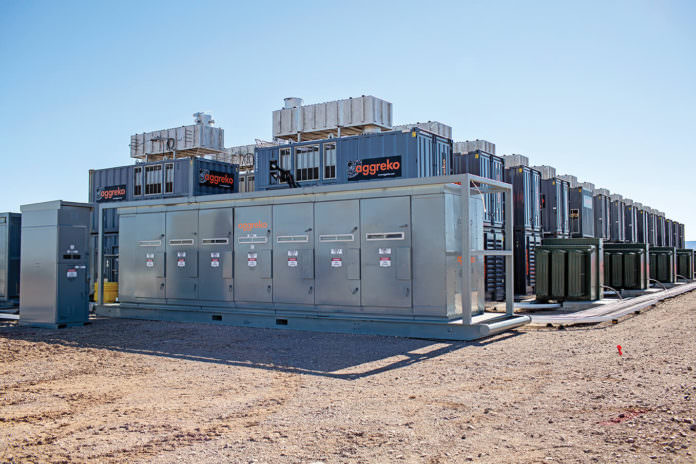
West Texas has a permanent power problem.
According to the Dallas Morning News, the Permian Basin, which produces almost 4 million barrels of oil a day, expanded so quickly that the electricity suppliers who are needed to keep wells running are struggling to keep up. In the article, an oilfield executive confirmed that the electrical grid in West Texas creates reliability challenges for the industry because the infrastructure can’t withstand the increased power. And, the Houston Chronicle reported that increased demand from Permian operations has affected power supply for the entire West Texas region. Clearly, power availability issues affect not only producer costs, but could impact industry reputation and relationships as well.
Since utility providers take three to six years to get new power lines up and running, West Texas companies complain about the existing system’s reliability and seek alternatives, such as temporary power generation, for their large-scale projects.
Rise of Temporary Power Projects to Mitigate Issues
Multi-megawatt temporary power projects that span 5 to 40 megawatts are increasingly more common for upstream and midstream companies across the Permian. New, rapid-installation methods and quick-commissioning timelines mean mobile generating systems can be up in a matter of days or weeks, depending on project size, to provide operators power ahead of the utility provider or to keep operations steady amid power unreliability.
For years, the West Texas power demand has outpaced the existing infrastructure, outstripping the capacity of power lines. Many large-megawatt users strain the system, especially during warmer weather. Companies are at risk of receiving notice to limit their loads from the Electric Reliability Council of Texas (ERCOT), which manages the flow of electric power in Texas. Such unanticipated notices can mean shutting down operations.
Multi-megawatt temporary power prevents such headaches and provides reliable power, 24/7, all year long. This reliability allows operations to remain steady without impacting the existing infrastructure.
Reduce Costs
Not only does multi-megawatt temporary power boost reliability, it can also be cost-effective. Uninterrupted permanent power for operators often comes at a premium, with on-demand or peak power charges from utility providers ranging from $1,000 to $1,500 a megawatt hour. However, with a sophisticated temporary power system, operators can not only mitigate on-demand costs but also store the surplus power capacity with the latest energy storage technology, via lithium ion batteries. Surplus electricity can also be exported to the local grid to be sold on the electricity market under an agreement with the network operator.
Lots of Options
Not every project is the same, and a customized temporary power solution can be designed to fit the individual needs of the project. For example, a combined heat and power solution might work best for some projects, while another project might save money with biodiesel fuel options or hybrid battery and generator packages. Temporary power allows projects the ability to ramp up or down as the project evolves or to swap out diesel generators for natural gas. And, many operators who are achieving little to no value for their associated gas find that deploying their own bi-product into their power strategy is their best return on investment.
Second Pair of Eyes
Given the remoteness of West Texas, it is essential to have a remote monitoring system in place to monitor and verify the operation of the power system as well as emissions. Remote monitoring alerts engineers of an issue immediately and allows for swift and focused decision-making before a costly problem or, worse, downtime or an environmental breach occurs. The 24/7 monitoring of the installation, operations and required maintenance of these complex power systems enables operators to devote a larger share of capital to other projects. For instance, a West Texas micro-grid, including twenty-five 1.3 megawatt containerized natural-gas units, is remotely monitored 24/7 in real-time by real people with advanced SCADA technology. It proactively diagnoses any equipment issues and ensures consistent power for the project.
Reduce Environmental Footprint
Tighter regulation means operators are expected to explore alternative options to minimize energy waste, reduce greenhouse gas emissions and improve air quality. Natural-gas generators are a good option for environmental reasons because natural gas emits roughly 30% less carbon dioxide than diesel fuel, according to the U.S. Energy Information Administration. For example, one West Texas operator recently installed a temporary power system using natural gas, advanced data and smart emissions reducer (SER) devices to meet the U.S. Environmental Protection Agency’s emissions regulations. And solutions deploying Selective Catalytic Reduction (SCR), an advanced active emissions control technology system, enable reduction of VOCs, CO and NOX to meet and exceed regulatory requirements.
In conclusion
the demand for temporary power will likely continue in the coming years due to the production boom in remote areas, such as West Texas, where electrical grids can’t keep up. Expertly designed temporary power solutions can be the right answer for operators to realize reliable power, mitigate risks, protect the environment, manage schedules and reduce costs for large-scale projects.
About the author: Josh Haugan is an Oil and Gas Business Development Manager based in Houston, Texas. Call Aggreko at 1-800-AGGREKO (1-800-244-7356) or visit www.aggreko.com whenever you need to empower your power strategy.














